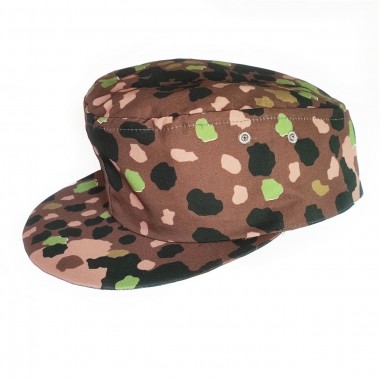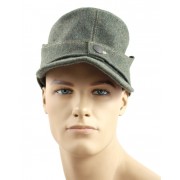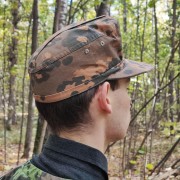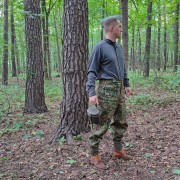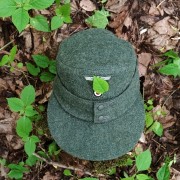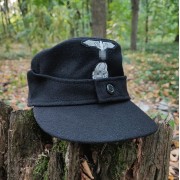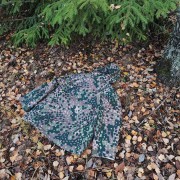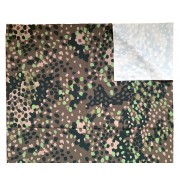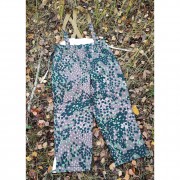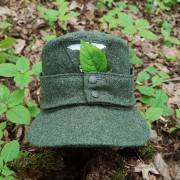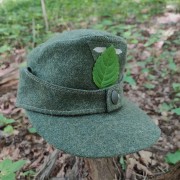Description
Very high quality camouflage cap of the SS. Produced by "Replika" in Russia. If you use the Dot uniform not for reenactment, but for tourism/hunting, then the cap will be very useful for you.
Cotton fabric is light and dense, has a water-repellent impregnation, drops roll off it! Great for use in autumn. A beautifully executed camouflage pattern, a neat copy without unnecessary "finishing" and "invention", which is often found on cheap copies. The correct shape of the bottom (inverted egg), wide visor, all the features of the assembly are respected (for example the line along the edge ends at the visor, and doesn't go above the visor, like on originals).
All caps carry a beautiful, well-reproduced SS-BW marking (SS-Bekleidungswerke, clothing factories of the SS, the runes are specially split up in the photo). Arabic numerals of the size and release date X44 (October 1944) is stamped beside. Of course, the originals didn’t have such clear marks, but often no marks at all! But we decided to make our cap beautiful.
The cap can be machine washed, the insert in the visor is water-resistant. But it is better to wash such a cap by hand in order to preserve the appearance for a long time.
Historical reference.
It is believed that the Dots cap was not produced, because in 1944 there were so few resources, the fabric was used for uniforms, and the production of caps, helmet covers, etc. was discontinued. However, such caps could be made artistically from fabric or Pea uniforms, and could be used in police units after the war.
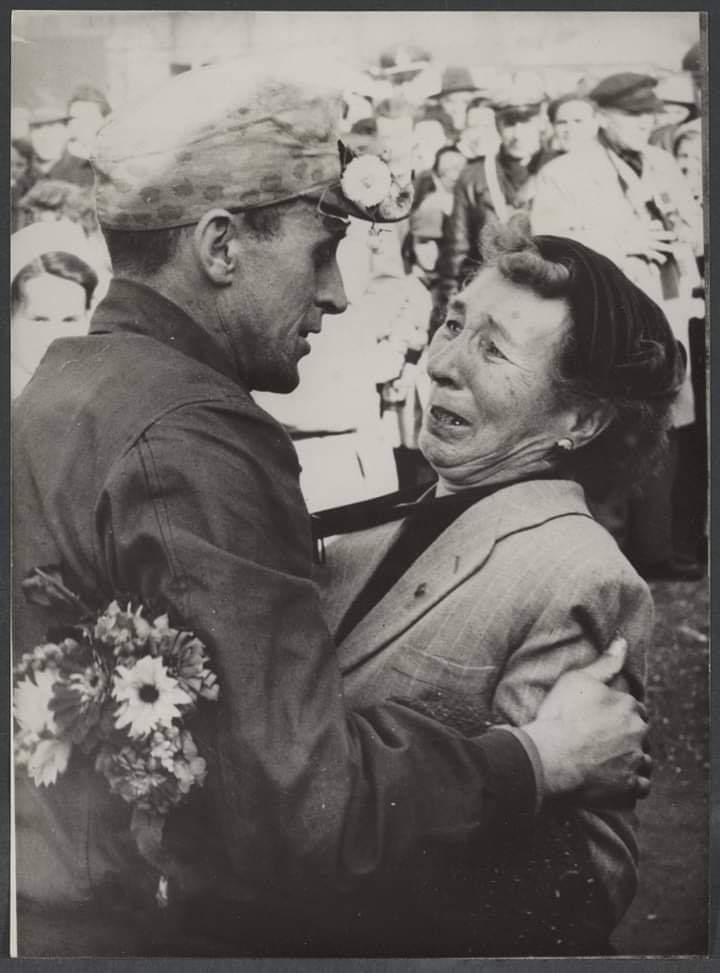
A soldier in a Dots Erbsentarn camo cap. The cap was most likely privately sewn from Dots Erbsentarn fabric, modeled after a tropical cap.
Why do the spots have white borders?
The white borders on the original fabric are the result of poor equipment setup, which was common during the war and especially at the end of it. This detail adds even more charm to the product of the final period of the conflict. The white borders (and generally the overlapping of spots) are made on this copy specifically.










